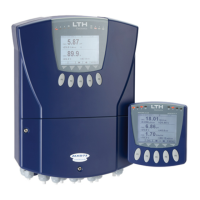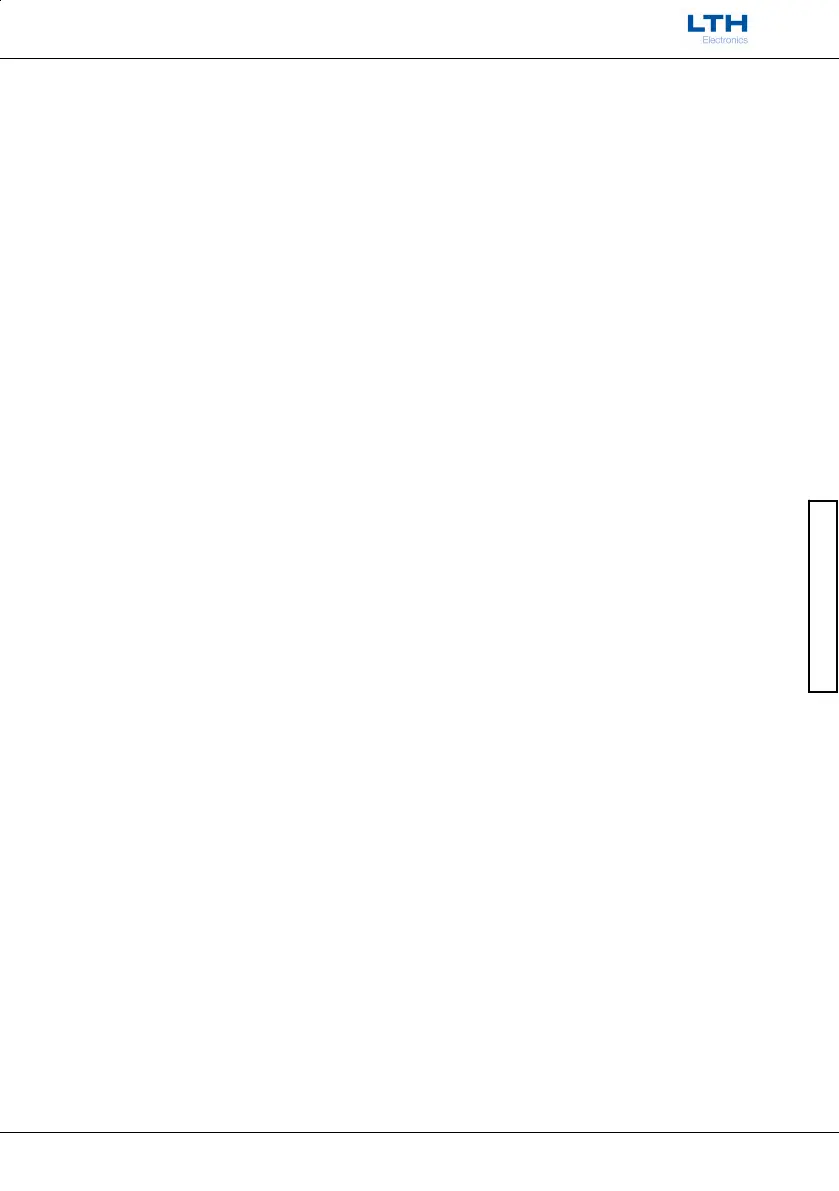Channel Calibration
MXD70 pH / Redox
Setup and Operating Guide
- 29 -
Channel Calibration
Calibration
Calibration Procedures
Normal good practices should be observed when calibrating electrode systems against standard
solutions.
Always clean the electrode system before inserting in the standard solution to avoid
contamination and to obtain the best response from the electrode system.
Rinse the electrode system in clean (preferably demineralised) water between standard solutions.
Allow time for the electrode system temperature to stabilise in each standard solution.
Use standard solutions of known quality. If in doubt make up fresh solutions.
Use clean beakers and bottles for standard solutions.
The input channel can be taken offline, which de-energises the relays and holds the current
outputs at their last values. This facility is useful when calibrating the system, however the
operator must ensure the relays are in a safe state when using this feature.
pH Buffers
LTH supplies buffer powders which are prepared from pure dry chemicals, sealed in a sachet or capsule
which prevents the absorption of moisture and subsequent deterioration. Buffer solutions should be
prepared in accordance with the instructions supplied with them.
The MXD70 Series offers two different but simple methods of calibration for pH electrode systems.
Auto
In Auto calibration the instrument requires that the electrode is first placed in a 4pH buffer and then
secondly in a 9pH buffer. These are nominal values for which the instrument carries the exact LTH
buffer values due to temperature variations (other pH buffer solution values at temperature can also
be entered). From these two points the instrument then calculates the Offset and Slope for the
electrode. NB. Auto calibration mode is not available when the pH probe type is set to antimony.
In order for the auto calibration to work correctly, the buffer temperature must either be measured by
the instrument during calibration, or if manual temperature compensation is being used the buffer
temperature must be entered in the Calibration Manual Temperature Input in the calibration menu.
Manual
In Manual calibration mode it is possible to do single or two point calibration, using either the
combined Buffer and Slope menu or individual Buffer menu. It is important to do the calibration at
suitable values i.e.
Adjustment of the Buffer (Offset) value at 7.00pH
Adjustment of the Slope (Gain) value at any other pH (usually 4 or 9 pH).
The output from an ideal glass/reference electrode pair will normally be 0mV at 7pH, therefore the
slope will have little or no effect at 7pH but increasing influence the further from 7pH the calibration
point is.
If a single point calibration is required the buffer should be adjusted. As actual pH buffer values are
used no compensation is made for the buffer solution with temperature in the instrument. It is
important therefore to note the actual buffer value at the temperature of the solution, see page 33 for
a table showing pH variations versus temperature for LTH’s standard solutions.

